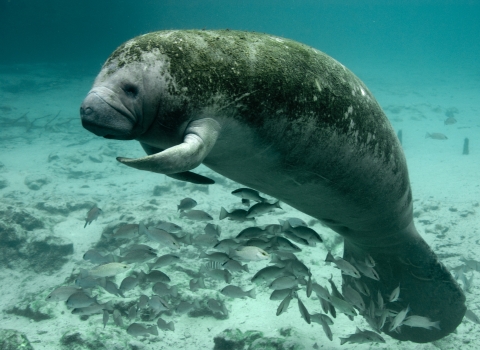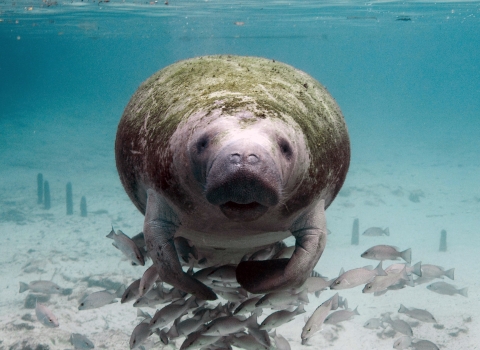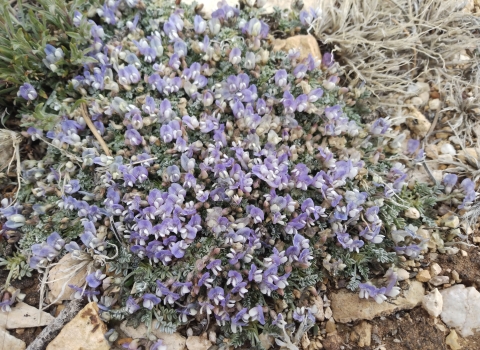Monarch butterflies are struggling. Counts of the familiar orange-and-black insects, admired for their flights of up to thousands of miles a year, are trending down so sharply that their migration is now under threat. That means fewer monarchs to inspire wonder, feed invertebrates and warn of habitat changes that may imperil other pollinators.
So how can we help? One simple way is to follow the lead of Neal Smith National Wildlife Refuge in Iowa and consider collecting and sowing milkweed seed.
But don’t delay. In much of the country, milkweed pods are ripe for picking in early fall.
Why milkweed? Milkweed is the host plant for monarchs—the lone plant on which the butterflies lay their eggs in spring and the only food source for monarch larvae. One reason monarchs are failing is that milkweed is disappearing from the American landscape. Scientists blame land-use practices such as farming with crops genetically modified to resist herbicides. The herbicides kill plants such as milkweed that grow around farm fields and have no such protection. Urban sprawl and development have also chewed up monarch habitat.
While conservationists weigh broad-scale rescue options, individual efforts can make a difference. “Every little bit helps,” says wildlife biologist Karen Viste-Sparkman at Neal Smith Refuge. “It doesn’t take a huge number of plants in any one place to help monarchs, especially during migration.”
At Neal Smith Refuge, school groups and volunteers have begun scouring fields for milkweed, as they do each fall, helping refuge staff collect browning pods for processing and planting.
Here’s a primer on how to do it.
How do I recognize milkweed?
The Department of Agriculture’s Natural Resources Conservation Service has photos of many varieties of milkweed in various stages of growth here: http://1.usa.gov/1maS5yq
How do I collect seed?
Wear gloves and avoid touching your face; milkweed sap can injure your eyes. Seek permission before harvesting seed on private, federal or state property. “Collect only the gray seed pods, not the green ones,” says Wedge Watkins, wildlife biologist at Big Muddy National Fish and Wildlife Refuge in Missouri. “If you squeeze the pod and it pops open, it's ready to pick.” When gathering pods in any one spot, leave a few behind on each plant. Don’t collect seeds unless you plan to sow them.
The University of Kansas’s MonarchWatch offers more guidance: http://bit.ly/1u81tS2
What do I do with the seed pods I’ve collected?
You can send the pods to MonarchWatch (Monarch Watch, University of Kansas, 2021 Constant Ave, Lawrence, KS 66047 for processing and planting. Or you can process and plant seeds yourself.
To separate seeds from milkweed silk – the white fluff inside a milkweed pod to which seeds attach – place a few coins in a clean, empty plastic container. Add the contents of the milkweed pod and close the container tightly. Now, shake the container until the seeds fall to the bottom and the fluff forms a ball on top. Unscrew the lid and remove the ball of silk fluff.
Either sow the seeds outdoors on bare soil before the first snow, or place them in a labeled, rodent-proof container that has air flow and store them in a cool, dry, ventilated area.
If Viste-Sparkman is saving seeds for starting indoors or in the greenhouse, she lets them dry completely to prevent mold. Then, she puts the seed in moistened sand in a sealed plastic bag with a few holes in it and stores the bag in the refrigerator. In early spring, she starts to germinate the seed indoors in potting soil (with the seed planted just below the surface). She plants the seedlings outdoors after danger of frost has passed. She plants seedlings near nectar-bearing plants that monarchs also need, such as asters and blazing star.
More tips on seed handling:
http://bit.ly/1teGMpy
http://bit.ly/1uH54Ii
Where can I learn more about monarchs and milkweed?
http://monarchwatch.org/bring-back-the-monarchs/
www.monarchjointventure.org
http://www.fws.gov/pollinators/
##
The National Wildlife Refuge System protects wildlife and wildlife habitat on more than 150 million acres of land and water from the Caribbean to the Pacific, Maine to Alaska. Refuges also improve human health, provide outdoor recreation and support local economies. Visit our home page at http://www.fws.gov/refuges. Follow us on Facebook and Twitter.



